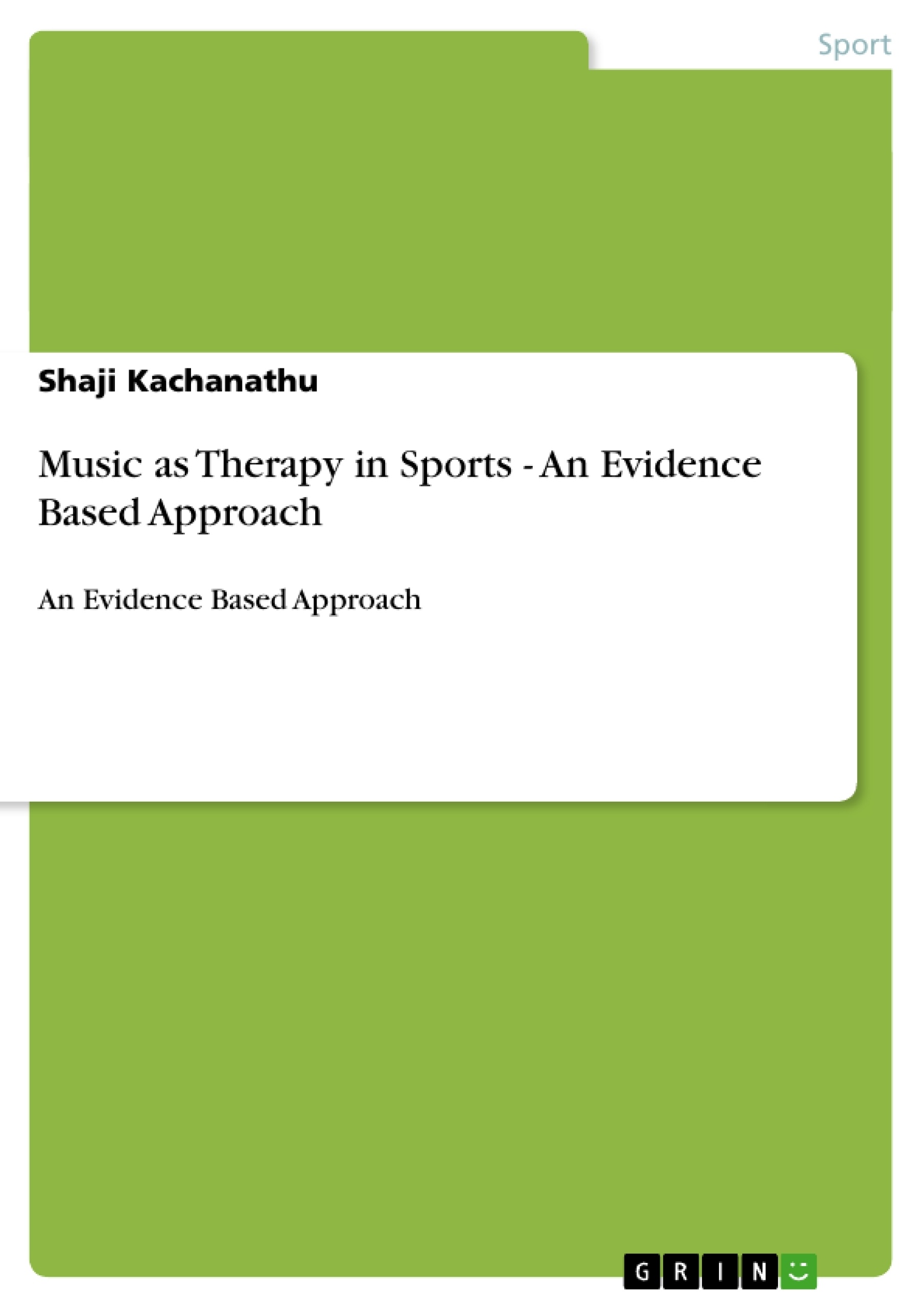Sports rehabilitation approaches have undergone a considerable metamorphosis over the past few years. New ideas and innovative technique will lead the reader into the evidence based practice. I wish you well in undertaking the smart way versus the hard way to work and treat the needy one.
Overall intention of this topic “Music as a Therapy in sports- An evidence based approach” is to understand the correct approaches of music selection and regimes, this wide knowledge of music shall be useful for sports rehabilitation. The book is intended for understanding, evidence based practice, and resource guide for graduate and post graduate students in athletic trainers, sports physical therapy and other health professionals who is responsible for sports injury rehabilitation.
It is understood that highly sophisticated rehabilitation methods may not be available for everyone and may not be always represent the most cost-effective road to recovery to that end in sports management and rehabilitation, music therapy is inexpensive and in many cases can be performed by the athlete himself.
Inhaltsverzeichnis (Table of Contents)
- Introduction
- History of Music Therapy
- Music Therapy in Ancient Times
- Music Therapy in the Middle Ages
- Music Therapy in the Modern Era
- Physiological Effects of Music
- Effects on the Autonomic Nervous System
- Effects on the Cardiovascular System
- Effects on the Endocrine System
- Effects on the Brain
- Music Therapy in Sports
- Music Therapy for Injury Prevention
- Music Therapy for Injury Treatment
- Music Therapy for Rehabilitation
- Applications of Music Therapy in Sports
- Music Therapy for Performance Enhancement
- Music Therapy for Pain Management
- Music Therapy for Psychological Well-being
- Music Therapy for Motivation and Focus
- Music Therapy Techniques
- Active Music Therapy
- Passive Music Therapy
- Guided Imagery
- Music Visualization
- Evidence Based Practice in Music Therapy
- Research on the Effectiveness of Music Therapy
- Clinical Guidelines for Music Therapy
- Future Directions in Music Therapy
- Conclusion
Zielsetzung und Themenschwerpunkte (Objectives and Key Themes)
This book aims to provide a comprehensive overview of the use of music as a therapy in sports, grounded in scientific evidence. It explores the history, physiological effects, and practical applications of music therapy in various aspects of athletic performance, injury management, and rehabilitation.- The historical evolution and theoretical foundations of music therapy.
- The physiological and psychological effects of music on the human body, particularly in the context of sports.
- The application of music therapy in sports, including injury prevention, treatment, rehabilitation, and performance enhancement.
- Evidence-based practices and research findings supporting the effectiveness of music therapy in sports.
- Future directions and emerging trends in music therapy within the realm of sports.
Zusammenfassung der Kapitel (Chapter Summaries)
- Introduction: This chapter provides an overview of the book's scope, purpose, and key themes, introducing the concept of music therapy in sports and its growing relevance in the field.
- History of Music Therapy: This chapter traces the historical development of music therapy, from its roots in ancient civilizations to its evolution into a modern, evidence-based practice.
- Physiological Effects of Music: This chapter delves into the physiological effects of music on the human body, exploring its impact on the autonomic nervous system, cardiovascular system, endocrine system, and brain.
- Music Therapy in Sports: This chapter examines the application of music therapy in sports, focusing on its role in injury prevention, treatment, and rehabilitation. It discusses various techniques and interventions used in this context.
- Applications of Music Therapy in Sports: This chapter explores the diverse applications of music therapy in sports, encompassing performance enhancement, pain management, psychological well-being, and motivation.
- Music Therapy Techniques: This chapter provides an in-depth look at various music therapy techniques, including active music therapy, passive music therapy, guided imagery, and music visualization.
- Evidence Based Practice in Music Therapy: This chapter examines the evidence base supporting music therapy in sports, reviewing research on its effectiveness and exploring clinical guidelines for its implementation.
Schlüsselwörter (Keywords)
This book centers on the intersection of music therapy and sports, focusing on the evidence-based application of music interventions to enhance athletic performance, manage injuries, and promote overall well-being. Key terms include music therapy, sports medicine, injury prevention, pain management, rehabilitation, performance enhancement, physiological effects, psychological effects, evidence-based practice, clinical guidelines.- Quote paper
- Shaji Kachanathu (Author), 2013, Music as Therapy in Sports - An Evidence Based Approach, Munich, GRIN Verlag, https://www.grin.com/document/233294



